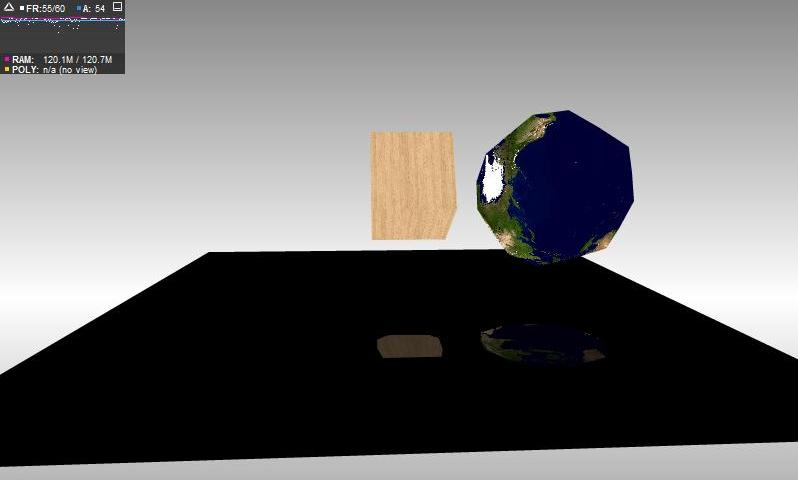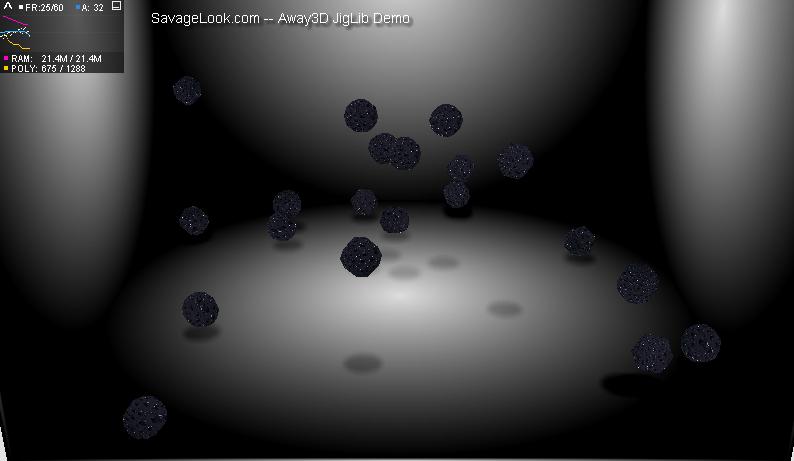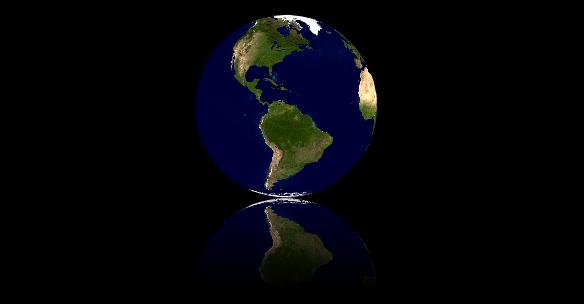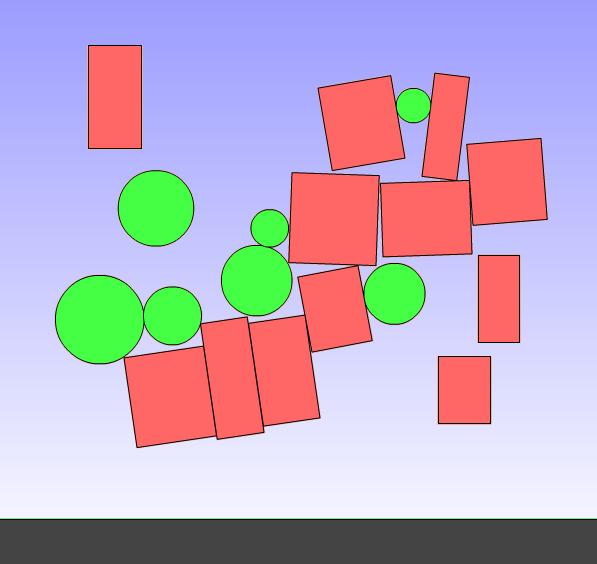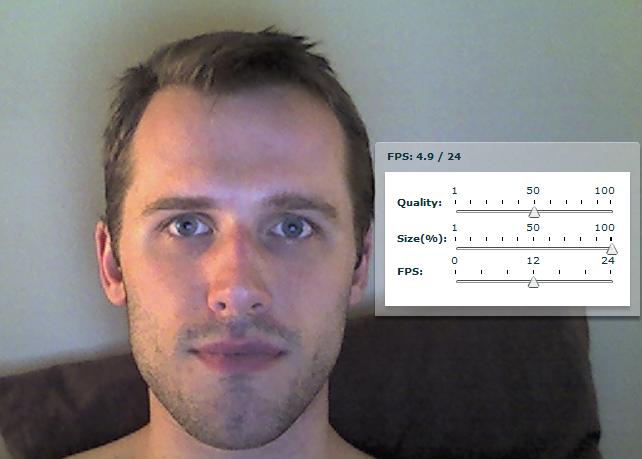1
2
3
4
5
6
7
8
9
10
11
12
13
14
15
16
17
18
19
20
21
22
23
24
25
26
27
28
29
30
31
32
33
34
35
36
37
38
39
40
41
42
43
44
45
46
47
48
49
50
51
52
53
54
55
56
57
58
59
60
61
62
63
64
65
66
67
68
69
70
71
72
73
74
75
76
77
78
79
80
81
82
83
84
85
86
87
88
89
90
91
92
93
94
95
96
97
98
99
100
101
102
103
104
105
106
107
108
109
110
111
112
113
114
115
116
117
118
119
120
121
122
123
124
125
126
127
128
129
130
131
132
133
134
135
| <?xml version="1.0" encoding="utf-8"?>
<mx:Application xmlns:mx="http://www.adobe.com/2006/mxml" layout="absolute" xmlns:local="*"
creationComplete="init();" frameRate="60" height="600" width="800"
viewSourceURL="srcview/index.html">
<mx:Script>
<![CDATA[
import away3d.primitives.Plane;
import away3d.core.base.Mesh;
import __AS3__.vec.Vector;
import away3d.materials.BitmapMaterial;
import jiglib.physics.RigidBody;
import jiglib.plugin.away3d.*;
import mx.core.UIComponent;
import away3d.primitives.Sphere;
import away3d.core.math.Number3D;
import away3d.core.utils.Cast;
private var _physics:Away3DPhysics;
private var _shadows:Vector.<Plane> = new Vector.<Plane>();
private var _bodies:Vector.<RigidBody> = new Vector.<RigidBody>();
[Embed("shadow.png")] private var pngShadow:Class;
[Embed("water.jpg")] private var jpgPaper:Class;
private function init():void {
if (stage) {
initAway3D();
} else {
this.addEventListener(Event.ADDED_TO_STAGE, function(e:Event):void { initAway3D(); });
}
}
private function initAway3D():void {
stage.quality = flash.display.StageQuality.LOW;
stage.scaleMode = StageScaleMode.NO_SCALE;
_drawBackground();
// prepare physics
var walls:Vector.<RigidBody> = new Vector.<RigidBody>();
_physics = new Away3DPhysics(away3dMain.view, 5);
walls.push(_physics.createCube({width:1000, height:10, depth:1000}));
walls.push(_physics.createCube({width:10, height:1000, depth:1000}));
walls.push(_physics.createCube({width:1000, height:1000, depth:10}));
walls.push(_physics.createCube({width:10, height:1000, depth:1000}));
var sprite:Sprite = new Sprite();
var matrix:Matrix = new Matrix();
matrix.createGradientBox(512,512,0,0,0);
sprite.graphics.beginGradientFill("radial", [0xdddddd,0x000000], [1,1], [0,255], matrix);
sprite.graphics.drawRect(0,0,512,512);
sprite.graphics.endFill();
var bmd:BitmapData = new BitmapData(512,512,false);
bmd.draw(sprite);
var mat:BitmapMaterial = new BitmapMaterial(bmd);
for (var j:uint = 0; j < walls.length; j++) {
var body:RigidBody = walls[j];
var mesh:Mesh = Away3dMesh(body.skin).mesh;
body.movable = false;
mesh.material = mat;
mesh.ownCanvas = true;
mesh.pushback = true;
switch(j) {
case 1:
body.x = 505;
body.y = 495;
break;
case 2:
body.z = 505;
body.y = 495;
break;
case 3:
body.x = -505;
body.y = 495;
break;
}
}
var paper:BitmapMaterial = new BitmapMaterial(Cast.bitmap(jpgPaper));
for (var i:int = 0; i < 20; i++) {
var sphere:RigidBody = _physics.createSphere({radius:30, segmentsW:6, segmentsH:6});
_bodies.push(sphere);
sphere.x = 100 - Math.random() * 200;
sphere.y = 700 + Math.random() * 3000;
sphere.z = 200 - Math.random() * 100;
sphere.material.restitution = 1;
// This is how to access the engine specific mesh/do3d
_physics.getMesh(sphere).material = paper;
var plane:Plane = new Plane({material:new BitmapMaterial(Cast.bitmap(pngShadow)), height:80, width:80, bothsides:true});
plane.ownCanvas = true;
plane.pushback = true;
plane.filters = [new BlurFilter(8,8)];
plane.blendMode = BlendMode.SUBTRACT;
away3dMain.view.scene.addChild(plane);
_shadows.push(plane);
}
// create away3d scene
away3dMain.title = "SavageLook.com -- Away3D JigLib Demo";
away3dMain.camera.position = new Number3D(0, 700, -1500);
away3dMain.camera.lookAt(new Number3D(0,0,0));
// assign pre and post render functions
away3dMain.preRender = function():void {
for (var k:uint = 0; k < _shadows.length; k++) {
if (_shadows[k].x > 505 || _shadows[k].x < -505 || _shadows[k].z > 505 || _shadows[k].z < -505 || _bodies[k].y < -10) {
_shadows[k].visible = false;
} else {
_shadows[k].x = _bodies[k].x;
_shadows[k].z = _bodies[k].z;
}
}
_physics.step();
};
away3dMain.postRender = function():void { trace("postRender"); };
}
private function _drawBackground():void {
var sprite:Sprite = new Sprite();
var ui:UIComponent = new UIComponent();
var matrix:Matrix = new Matrix();
matrix.createGradientBox(this.width, this.height, Math.PI/2, 0, 0);
sprite.graphics.beginGradientFill("linear", [0x888888, 0xffffff], [1,1], [0,255], matrix);
sprite.graphics.drawRect(0, 0, this.width, this.height);
sprite.graphics.endFill();
ui.addChild(sprite);
this.addChildAt(ui, 0);
}
]]>
</mx:Script>
<local:AwayUIC id="away3dMain" x="0" y="0" height="600" width="800"/>
</mx:Application>
|

